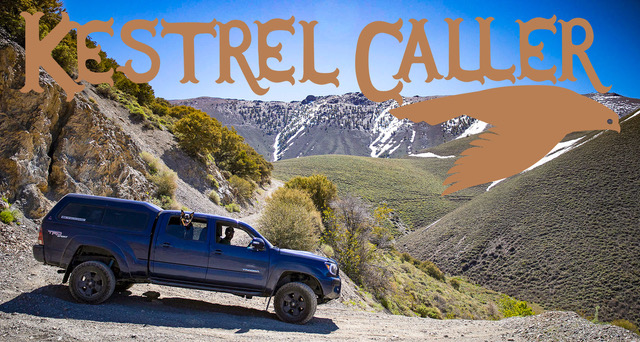Prefer to hear to this Story Instead? Listen Here.
Nestled into the wilds of the east Walker River in Nevada’s high desert sagebrush steppe, it’s there: the Flying M Ranch, and the one million acres of terrain that still holds so many secrets.
In good company with the rest of Nevada’s most special places, this massive acreage gets skipped over a lot, at least by the average person. But to anthropologists, chemists, theologists, spiritualists, billionaire hoteliers, astronauts, Hollywood actors, some of the most adventuresome record-setters the world has ever seen, and anyone else who’s stopped to see, there’s no other place exactly like it.
Nevada’s a big place. I know I’m probably in good company here with you, dear reader, but I’ll go ahead and say it anyway: for those of us who are interested in history, outdoor recreation, authenticity, and so much mystery a lot of people in a modern world still can’t even begin to understand or explain it, there’s a lot to see, learn, and experience out there across its 110,000 square miles of terrain. And while each of these things are enough to keep pulling me toward Nevada backroads infinitely, it’s that magic intersection of where these things meet that’ll always have me feeling the very most alive. The places where one extraordinary feature may initially nudge you out into the Sagebrush Ocean or that blank spot on the map that simply can’t remain that way a second longer, but when you stop to actually have a proper look, there’s more. Much more, and it all unfolds before you in a way you can’t ever really plan for, but just happens.
This is the exact way it went down for me and the Flying M Ranch, by the way. I kept hearing all these different versions of the same story about a cluster of petroglyphs somewhere along the east Walker River: where exactly, nobody could specify. A place that could be BLM, was possibly monitored by Walker Basin Conservancy, or was maybe even under USFS control, and while a lot of other Nevadans who’ve gotten just as far away from the cell phone towers as I have had heard about this same spot, nobody really knew for sure, just that these petroglyphs were definitely out there. That is, up until I got Nevada State Parks on the phone. It turns out Walker River State Recreation Area was going to be having the (modern) original land owners out to record their stories before it was perhaps too late—the ones who named it Flying M after their last name, Murphy—and invited me to ride along.
So with Mt. Grant and Nevada petroglyphs as my compass, it wasn’t until I was out there staring into them that it actually hit me. Just the same as you, me, or any modern day adventurer, to the Northern Paiute who’ve called this region home for thousands of years and earmarked their presence with permanence for us to rediscover all these years later, to the pioneers who thought this exact place would be a reliable stagecoach stop to resupply Aurora and Bodie gold hunters, to generations of Great Basin Buckaroos, to the perfect hideout for Barron Hilton and his long list of famous friends to escape the real world, to the Nevada State Park rangers who guard the very ground I was standing on, were were all connected. Threaded together by the promise, and maybe even secrecy in the rise of the terrain before us.
It’s the story of the Land of a Thousand Tombs, Barron Hilton’s high desert hideout, the last place legendary adventurer Steve Fossett was last seen alive, and where they all meet, at the Flying M Ranch.
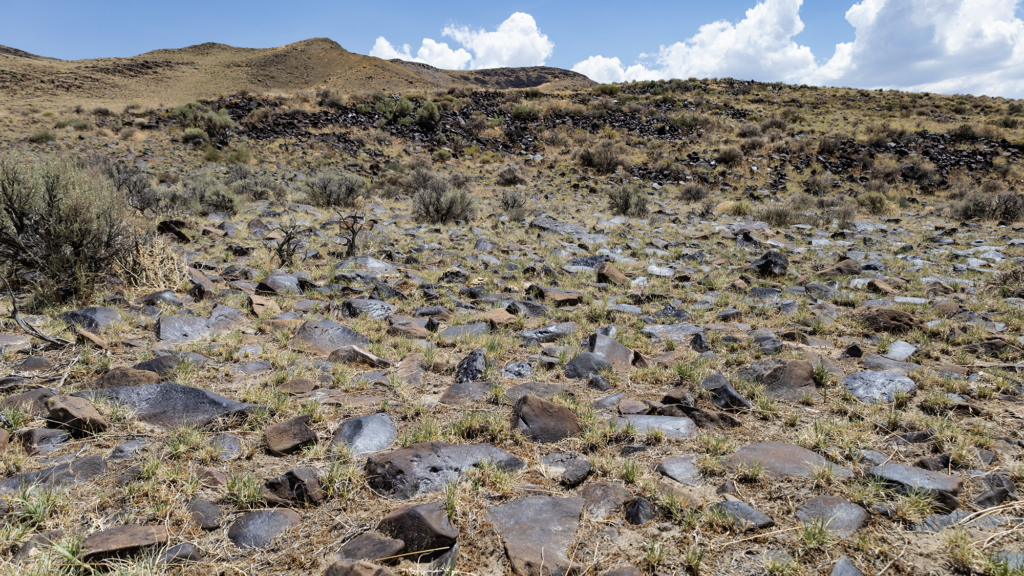
The Land of a Thousand Tombs
Don’t know what you’re looking at? Make it up. At least that’s what plenty of people (even those operating from an official capacity) have done throughout time. Add in a landscape that is a wild-ass departure from what most people are used to looking at, and there you have it: the boundary line between truth and lore practically disappears. Nevada always has been the perfect venue for dreamers, with an undeniable sense of spiritualism in the rise and fall of its topography.
And that’s basically what happened with Captain Alan Le Baron—a geologist, engineer, and amateur archeologist who first visited these central Nevada petroglyphs back in 1923. To really set the stage here, his rediscovery of the east Walker River petroglyphs was on the heels of a lot of other really important indigenous sites being rediscovered in Nevada, including Lovelock Cave (1911), and Hidden Cave (the mid 1920s), to name a few. So you could say that some wishful thinking may have been part of the storyline here. Either that, or pure unbridled excitement for “discovering” an unseen West and that he perhaps saw what he wanted to.
It started when a local prospector tipped Le Baron off about these Nevada petroglyphs, and having formerly lived in Egypt for a period of time, he immediately concluded that the Nevada terrain before him resembled the exact dry climates depicted in the Bible. He also convinced himself that these ancient rock carvings were an identical match to Egyptian hieroglyphics, and also depicted Babylonian characters. Imagine that: the cradle of civilization, right here in the high desert.
Before him was an enormous basin filled with gigantic boulders carved with thousands of symbols, and what he legitimately believed to be curious, ancient writings—“exactly like” the ones he saw in Egypt—accompanied by illustrations of creatures who lived and died long ago, signs of an entire petrified forest, and plenty of other ancient fossil specimens. And all reported by an amateur archaeologist, remember.
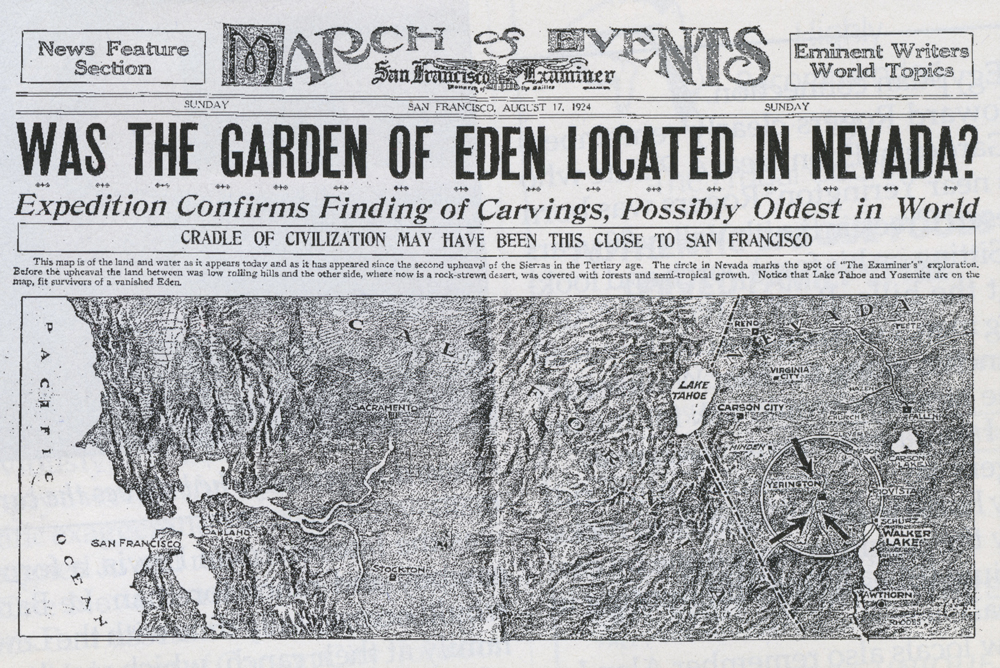
Immediately deciding something super important happened here on this assuredly sacred ground, he regaled his discoveries of this Nevada Garden of Eden to newspaper titan William Randolph Hearst, who owned the San Francisco Examiner. Hearst not only immediately gave him a platform to document his expeditions through many front page spreads, but also flipped the bill for continued coverage through a 1924 expedition Le Baron would lead and call Cascadia, this time bringing along Edward Clark, who was the Examiner’s Sunday editor, and Dr. H.R. Fairclough, a professor in classical literature at Stanford University.
During their visit, they declared to have “found to be what appears to be the oldest evidence of civilization in the world—the oldest writing, the oldest art, the oldest sacrifice, the oldest worship, and the oldest burial.” And all without the expertise of a real anthropologist or archaeologist. Wild. From there, sensationalized reportings of this place shot to the moon, with front page coverage and accompanying full page features of their discovery three days in a row, from August 17-19, 1924. Then? Then a professor of anatomy at the University College of London and an expert on Egyptian mummies (!) got involved, claiming “no such monument has ever before been reported in this continent… nothing like it has ever been found,” likely leaning into the fact that they knew they were in a region where Northern Paiute had lived for thousands of years before them.
They definitely weren’t wrong in that this was obviously an important place of worship for some of Nevada’s first human inhabitants. That, and the oldest petroglyphs and human remains in the continent would in fact come from Nevada’s Winnemucca Lake, and be realized by actual archaeologists several decades into the future and beyond his lifespan. So, he was definitely on to something, but it just spiraled out of control without any actual proof, and fast. Le Baron convinced himself that a bunch of rocks in a basin were not only covering thousands of individual grave-like tombs, but also suggested that somewhere within it was the Tomb of Christ, and decided to unofficially officially call it the Hill of a Thousand Tombs.
More experts got involved, including folks from Theology Magazine, who declared the site a new center of racial origin. Then Dr. Frank T. Green, who was a professor of Chemistry at San Francisco and a toxicologist for the San Francisco Coroner’s Office, said that the soil samples recovered from Le Baron’s Hill of a Thousand Tombs definitely included phosphate, which is an element present in human bones. It’s also so naturally occurring in Nevada’s mineral rich terrain that major phosphate mines are headquartered here, too. Now all they needed was a body, or real proof of actual human or even animal remains were found here, but that never came for La Baron and his team. Still no archaeologists, either.
As most news cycles go, this story had Westerners in an absolute chokehold for at least a few weeks before Le Baron couldn’t come up with any real proof of this being the actual cradle of civilization, he ran into a few obstacles, eventually ran out of funding and ultimately, personal interest. Even though his enthusiasm dwindled, he never got too far away from the personal discovery of his lifetime out along the east Walker River, and even became a bit of a local celebrity, married a Yerington school teacher, and settled into an ordinary life. Those “Egyptian hieroglyphics” turned out to be Nevada petroglyphs, depicting Nevada bighorn, mule deer, and rabbits, at a site that was likely a reliable hunting spot for the Northern Paiute who lived here. No human remains were ever recovered.
So with a new petroglyph site I’d yet to see, and the spectacular sensationalism of the Hill of a Thousand Tombs swirling around in the back of my mind, we set out to meet up with Walker River State Park rangers on a mid-July morning. We learned that while this Nevada petroglyphs site does in fact lie squarely on BLM land, a person would need to access it from the Flying M Ranch, which is still considered private property.
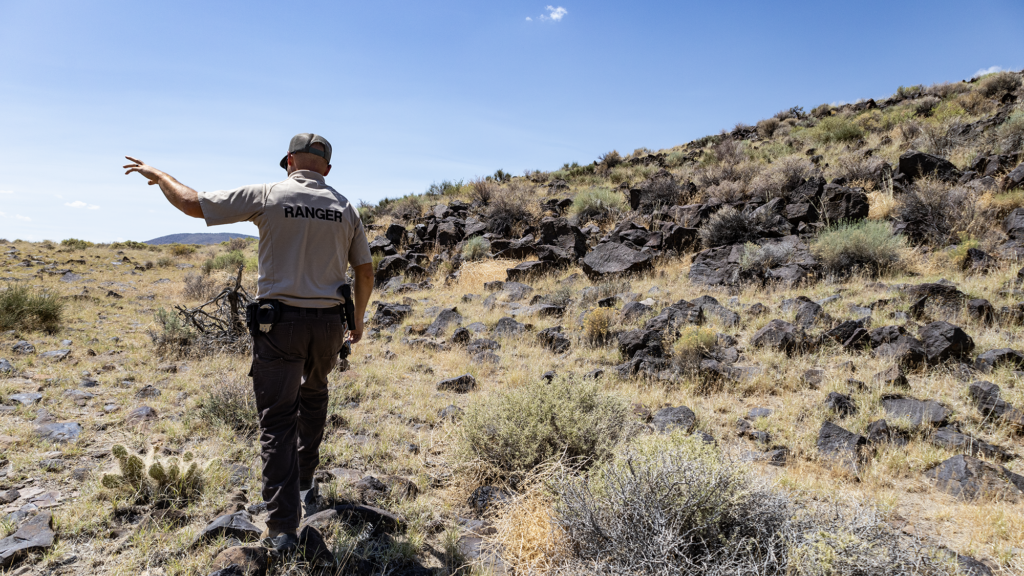
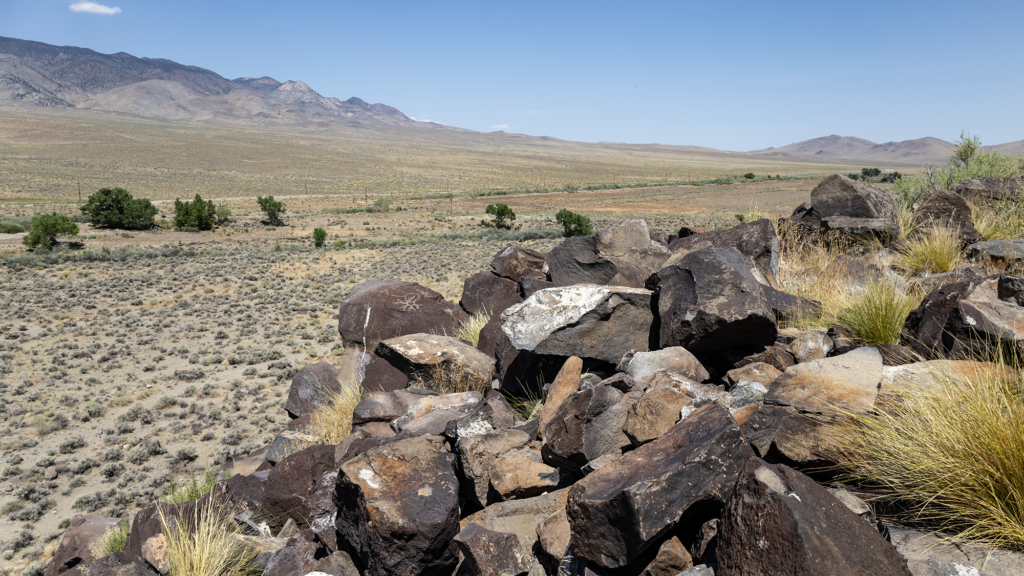
Once we made it through a bunch of locked gates, there they were: petroglyphs on every rock in sight, clustered together on a small hill just above the east Walker River. Anxious to experience what Le Baron saw with my own eyes, I kept asking our park ranger escort if he’d heard this story, and where he thought this massive basin covered with tomb-like boulders actually was. There was definitely a white powdery “phosphate” evident slope and perhaps where Le Baron attempted to excavate for human remains, along with a small natural basin with quite a few rocks and a USGS survey marker my husband spotted, drilled into them. We did notice a precariously balanced pile of rocks, maybe from the Tomb of Christ he alleged, or a trail cairn assembled by the same folks who installed that survey marker.
There were some really fascinating details at this particular site, separating it from the others I’ve personally visited all across the Sagebrush State, including several petroglyphs that almost appeared to be a map, with arrows, even. In a lot of cases, if an ancient petroglyph site like this is situated on a hill overlooking water, or what was once water (like a prehistoric lake that evaporated long ago), experts will usually tell you the petroglyphs were made as part of a hunting ritual, documenting the animals who were likely drawn to the water source they were near, providing a reliable life source for their group. I’ve seen LOTS of Nevada bighorns at petroglyph sites, but the ranger pointed out a different version here, along with almost room-like hunting blinds.
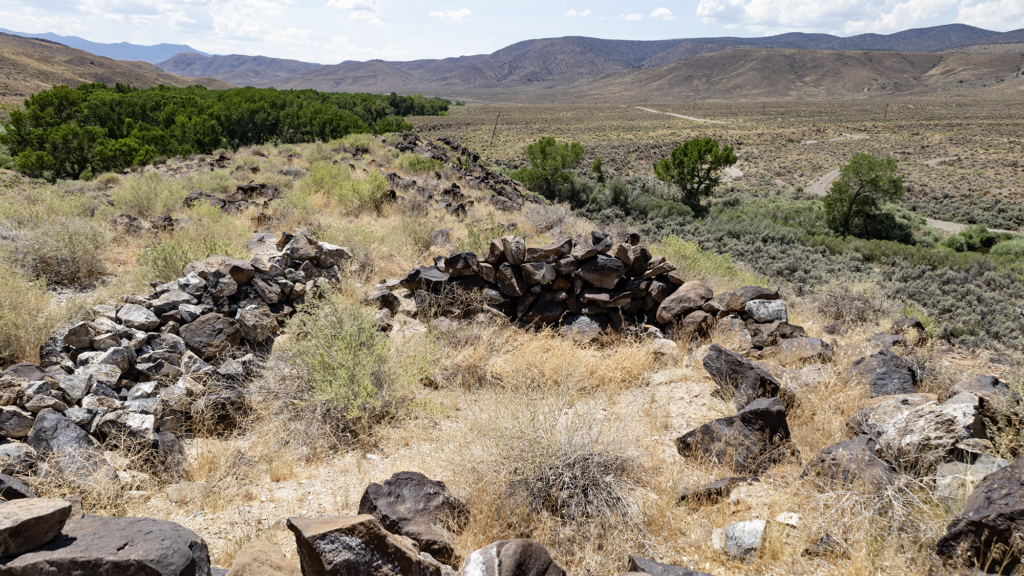
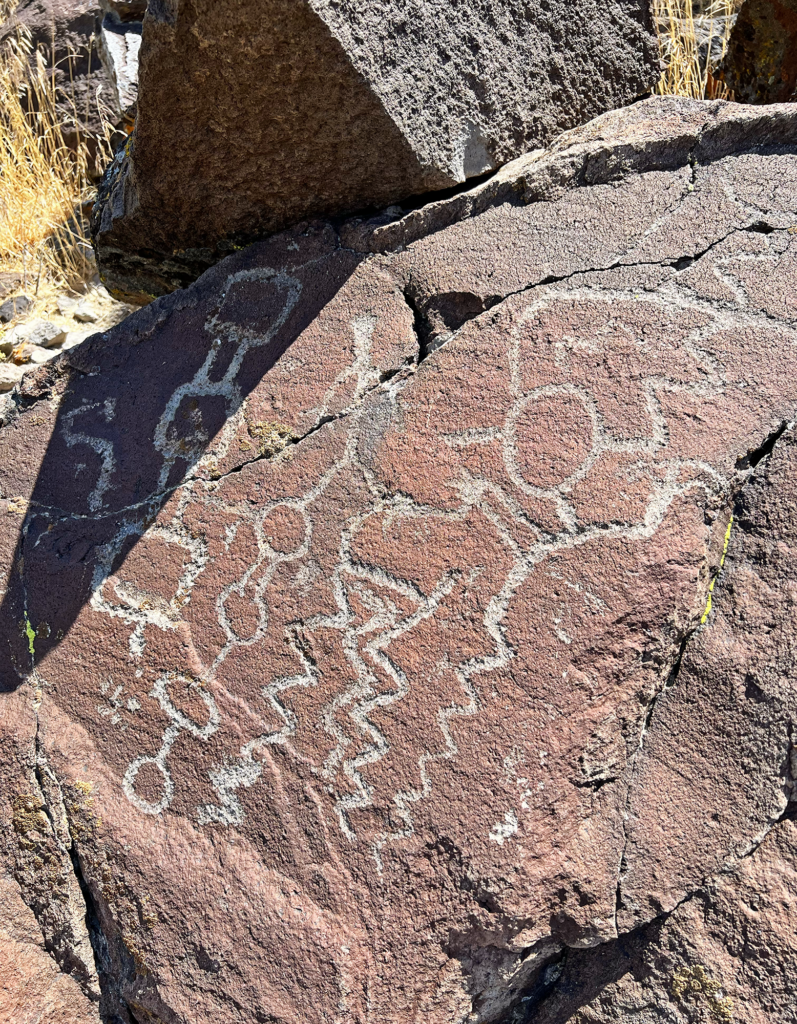
We also noticed plenty of petrified wood, all kinds of crazy rocks, and high up on the mountain towering overhead, what were said to be large boulders that almost looked like people, watching us. Legend has it that they were set up on end on purpose by the Walker River tribe during the Aurora and Bodie boom days as “Indian Watchguards”, to perhaps intimidate early prospectors into thinking they were seeing people up there as they took from the tribe. Just ask any Yerington-area old-timer about those “Indian Watchguards,” and they’ll tell you all about them.
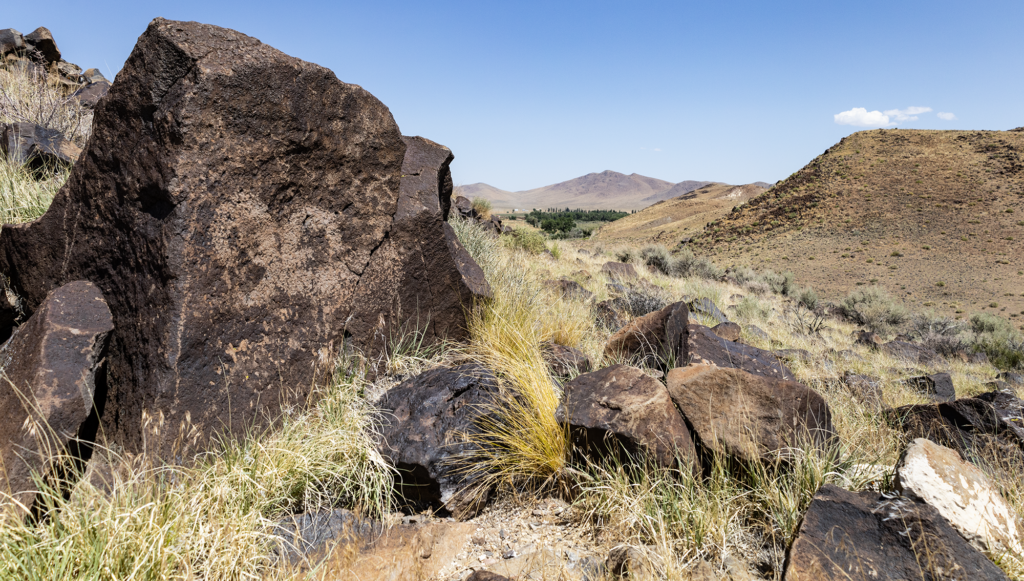
No matter how you look at this wild tale and the truths and inaccuracies that stemmed from it, a few things are absolutely certain about the Land of a Thousand Tombs: this exact spot was clearly a place of worship, that the original indigenous population, Le Baron, and early prospectors were inspired by the terrain at this particular place, and they all had fabulous imagination.
Mineral County’s Old Stagecoach House, and Becoming the Flying M
Turns out, a hotelier with his name in lights all across the world would also be inspired by this exact property 8 whole decades into the future: Barron Hilton. But before we get to his piece of the Flying M and his million-acre conservation legacy, there’s a list of other property owners in the mix before the place would reach its destiny as “Mr. Hilton’s Toy Store.”
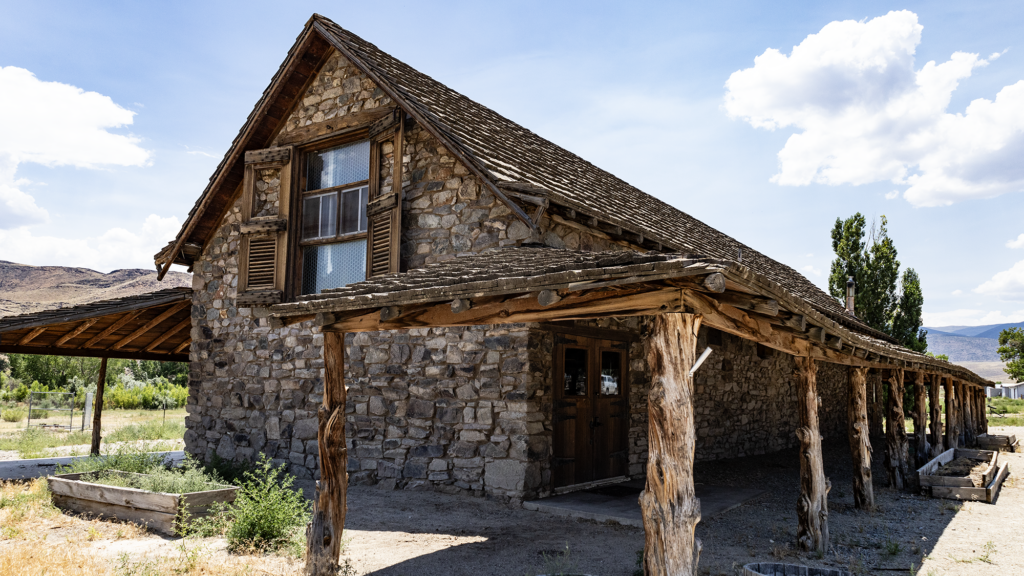
Pretty much a blank spot on the map today, this region couldn’t have been more of the ultimate bullseye of a destination for gold and silver hunters during the 1860s. Just about a full century before it would ever become the Flying M, someone decided this lush spot along a natural bend of the east Walker River would make for an ideal stop for prospectors on their way to that famous Nine Mile Ranch—the one Mark Twain would write about spending the night at on his way to Aurora, where he would try and fail at becoming a prospector.
Alongside Nine Mine, the Old Stagecoach House is unquestionably one of the oldest buildings in Mineral County (some say it’s among the oldest in all of Nevada), and with Aurora booming in the mid-1860s and then Bodie through the 1880s, it kept busy for many decades hauling plenty of produce, firewood, and other crucial supplies to restock both mining camps. I noticed it when we first arrived at the Flying M that morning, but it wasn’t until I was standing inside Barron Hilton’s living room and got a look at an oil painting of it hanging in his bar with Abraham Lincoln standing in front of it that its importance would fully register.
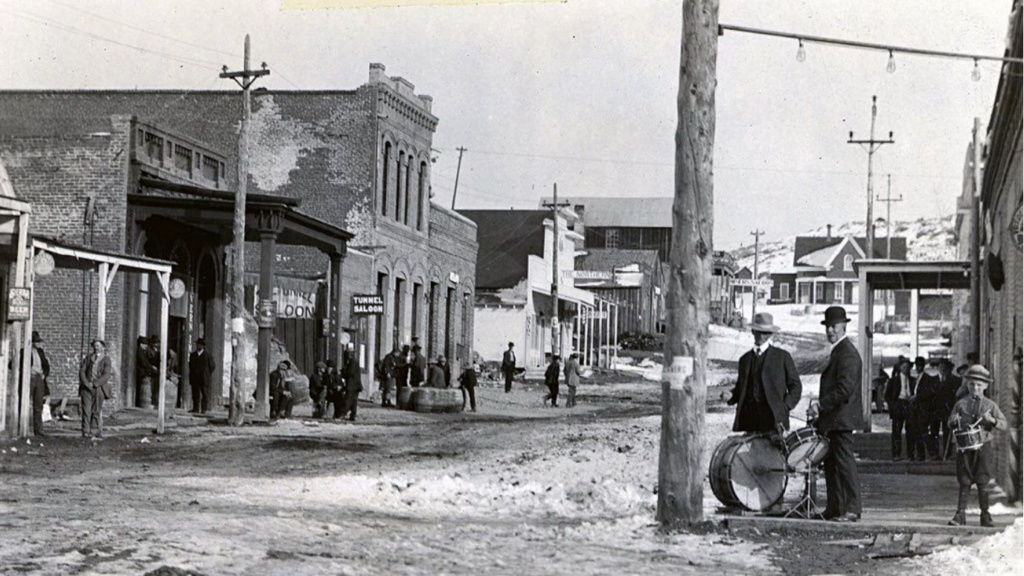
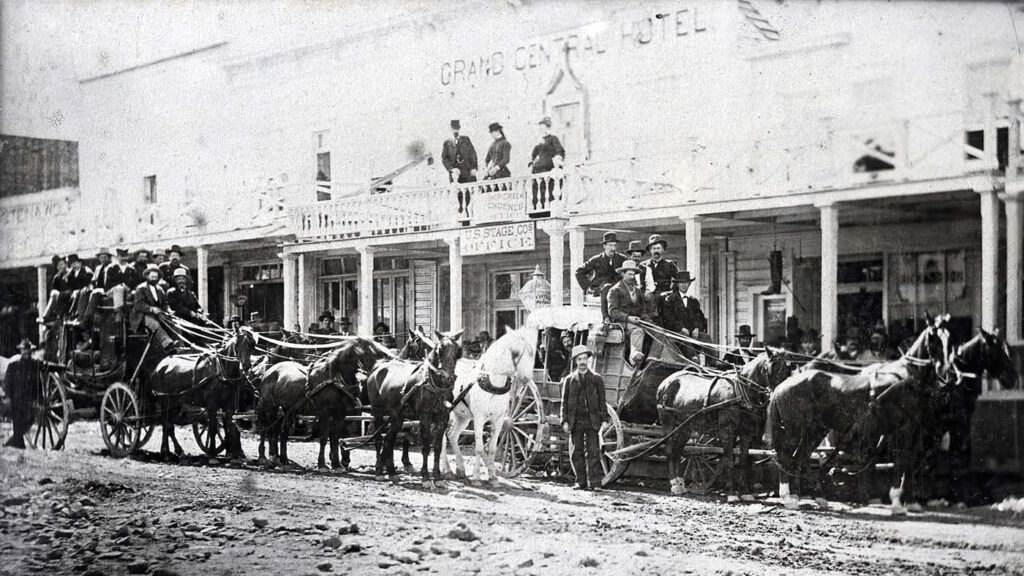
As the first, and original structure on this property, it was responsible for shipping goods and supplies to area boomtowns. It was also the only reliable stopover between Yerington and Mono Lake. But then once Aurora and Bodie boomed and bust, there wasn’t much reason to be in this part of the West unless you were on the way to someplace else. By the time the 1950s rolled around, Yerington, NV had secured its spot as one of the top onion and garlic producers on the planet. So with a proper town only a couple dozen miles to the north and prime, lush riverside access, this property—one that had already been used by thousands of people up until this point—became a private ranch, this time owned and operated by the Stanfield Murphy family. Under their ownership and its appeal realized yet again, it would officially become the Flying M Ranch.
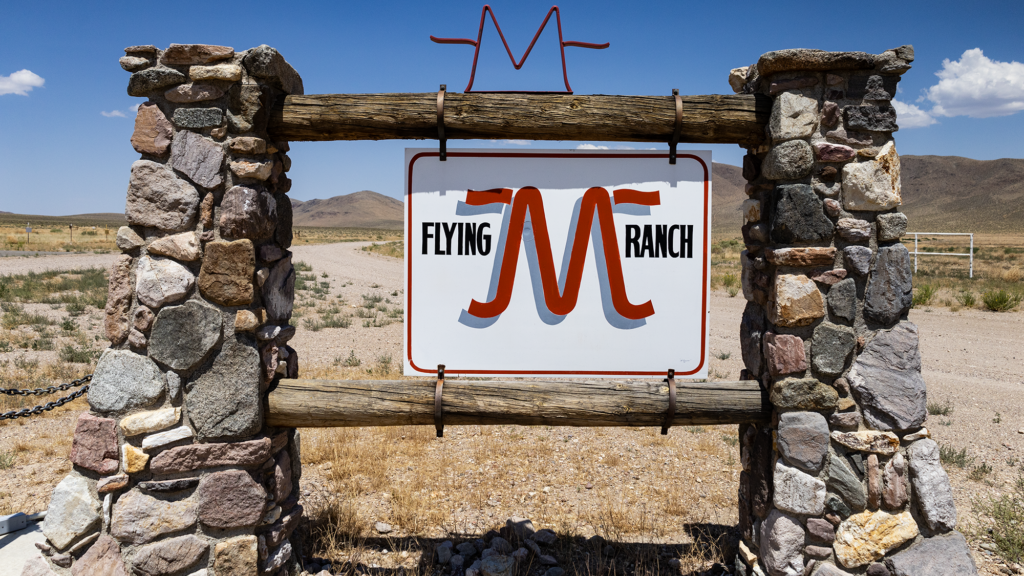
The Murphy Family was there during our visit, including the patriarch of the family who grew up as a young boy on the ranch during the 1950s, along with his wife, children, and even a couple grandchildren. Nevada state officials carefully recorded personal accounts of what it was like spending his adolescence here, and for a man almost certainly in his eighties or beyond, he sure seemed to remember it all like it was yesterday. II wondered if he could recall exploring the Land of a Thousand Tombs as a boy, but that of course wasn’t the focus of their visit.
The Flying Innkeeper’s Place
Then in the mid 1960s, the Murphys ultimately sold their ranch to “the Flying Innkeeper” Barron Hilton and several of his buddies. So why Nevada, and why this exact spot? I’d like to believe it was because he could lean into discovery only a place like Nevada affords. But in more likely actuality, whether it was its remoteness, thermal soaring conditions that made for supreme gliding and flying weather, the fact that his wife’s name was Marilyn and the Flying M was an awfully serendipitous fit, or some magic combination of all three, Barron would ultimately buy out his friends’ share of the property and it would become his and Marilyn’s exclusively by 1972.
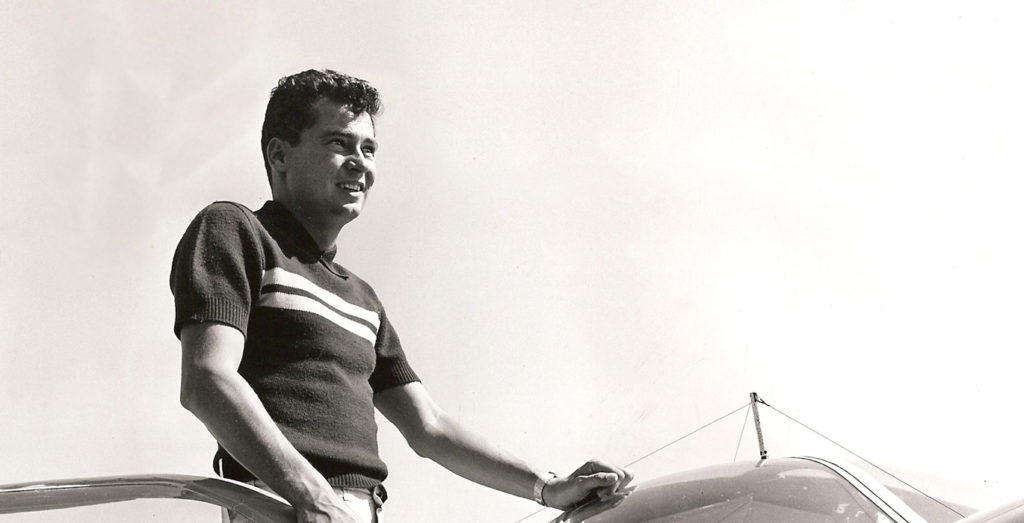
The son of Conrad Hilton, who originally founded Hilton Hotels & Resorts and Paris Hilton’s grandfather, Barron Hilton had two qualities about him most other billionaires do: an interest in niche hobbies, and the deep pockets to fund them for him and all of his friends. And that’s basically exactly what he used the Flying M Ranch as. Altogether, Barron Hilton purchased Stanfield Murphy’s ranch from him which included twenty thousand surrounding acres, and then leased the nine hundred and eighty thousand acres around it, all the way to the Nevada/California state border. His acquisition would include the Nine Mine Ranch, a super-famous fishing spot on the East Walker River called The Elbow, and a swath of land the size of Rhode Island.
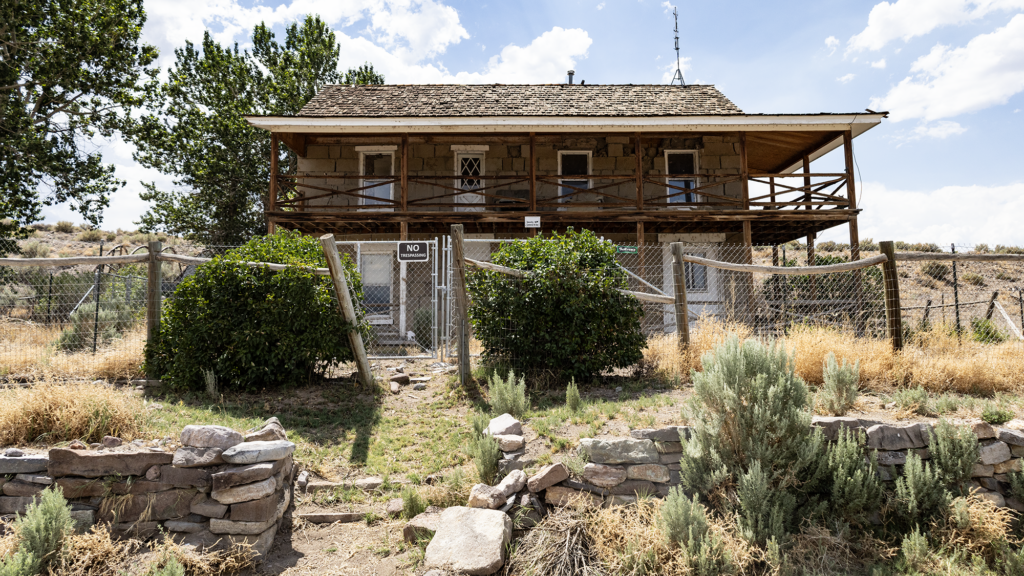
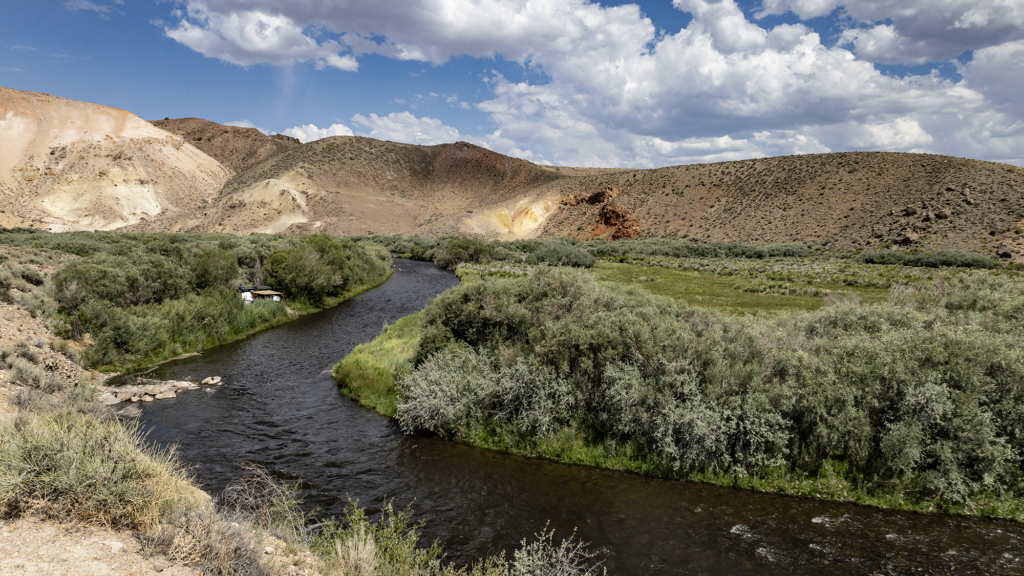
Besides a retreat in “the middle of nowhere” that promised anonymity, Barron Hilton would create and maintain a 5,500 foot airstrip complete with several airplane hangars filled with a dozen gliders and other rare planes. A lot of his guests would include other celebrities and social circles who lived similar lifestyles, and also of course saw the allure of hiding out in the high desert with him. He regularly had academy-winning actors and musicians, olympians, pilots of all kinds, and even astronauts out to the Flying M.

Nevada is a world renowned gliding destination, thanks to really specific thermal wind conditions rolling off the eastern Sierra, but also plenty of other mountain ranges all over the state. Given Nevada is the most mountainous state in America, at least by number of individual mountain ranges, its soaring potential is basically limitless. But at the Flying M, its unique positioning at the foot of Mount Grant—Nevada’s 13th tallest mountain summit at 11,300 feet elevation—really made it a pilot’s destination.
Nevada is a world renowned gliding destination, thanks to really specific thermal wind conditions rolling off the eastern Sierra, but also plenty of other mountain ranges all over the state. Given Nevada is the most mountainous state in America, at least by number of individual mountain ranges, its soaring potential is basically limitless. But at the Flying M, its unique positioning at the foot of Mount Grant—Nevada’s 13th tallest mountain summit at 11,300 feet elevation—really made it a pilot’s destination.
Barron had a pilot background himself, and said that “soaring added a whole new dimension of pleasure to [his] life”. He would go on to host many gliding camps at the Flying M, and even held the Barron Hilton Cup, which was a worldwide soaring contest that drew really famous and accomplished pilots from all corners of the globe here, too. One of them was Steve Fossett—a man who, if you know of, needs no introduction. And if you haven’t, basically all you need to know is this guy was the most accomplished record-setting adventurer in the world, dead or alive.
The Last Place Steve Fossett Was Seen Alive
Think of the most badass adventurer you know, and then multiply it by about a hundred and you’ve got Steve Fossett. The real mind-mindblower of it all is, he started out as an ordinary guy, but would go on to get mega-rich in the finance industry, which flipped the bill for his world adventures.
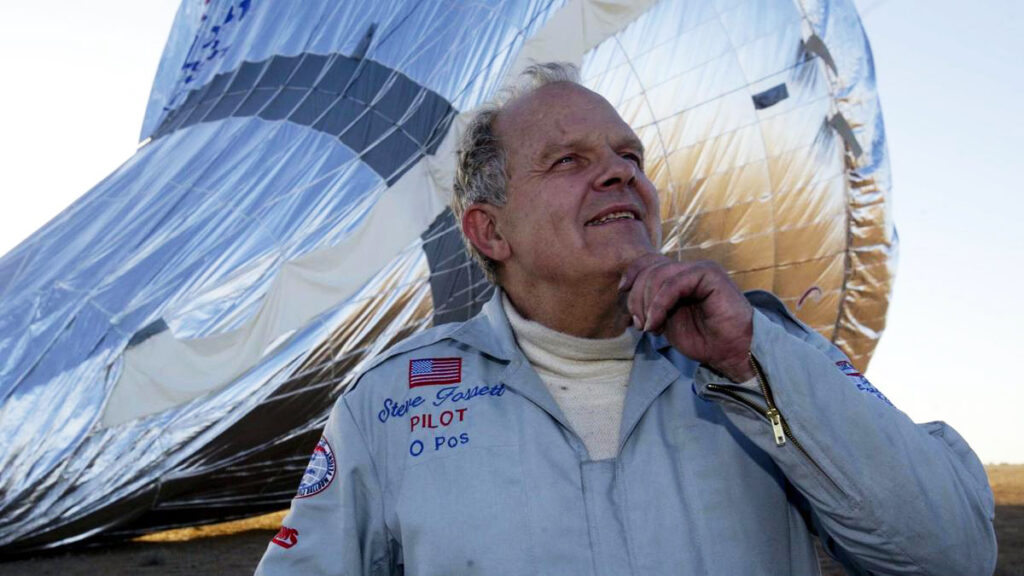
Fossett credited his thirst for outdoor adventure and later, life experience, to being an Eagle Scout, saying his time in Scouts was not only the foundation of his success, but also where he learned to set goals and achieve them. And realizing he set more than 100 records in five sports, that really speaks volumes. Fossett was part of the Royal Geographical Society and Explorers Club, and used his millions to finance learning new adventure sports, and later, set records in them.
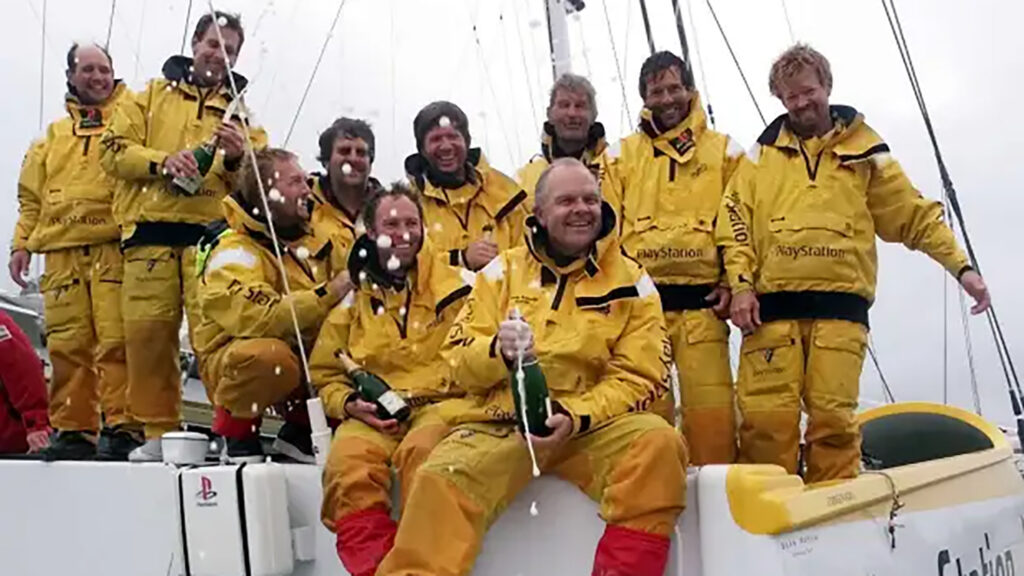

He was known around the world for his records in balloons, sailboats, gliders, and powered aircraft, but he also cross country skied, was an avid mountain climber, raced in the Iditarod Trail Sled Dog Race, swam the English Channel, participated in the Ironman Triathlon in Hawaii and ran the Boston Marathon, and raced cars at 24 Hours of Le Mans. He also became the first person to fly solo nonstop around the world in a balloon, and in a fixed-wing aircraft, which were probably his most celebrated accomplishments.
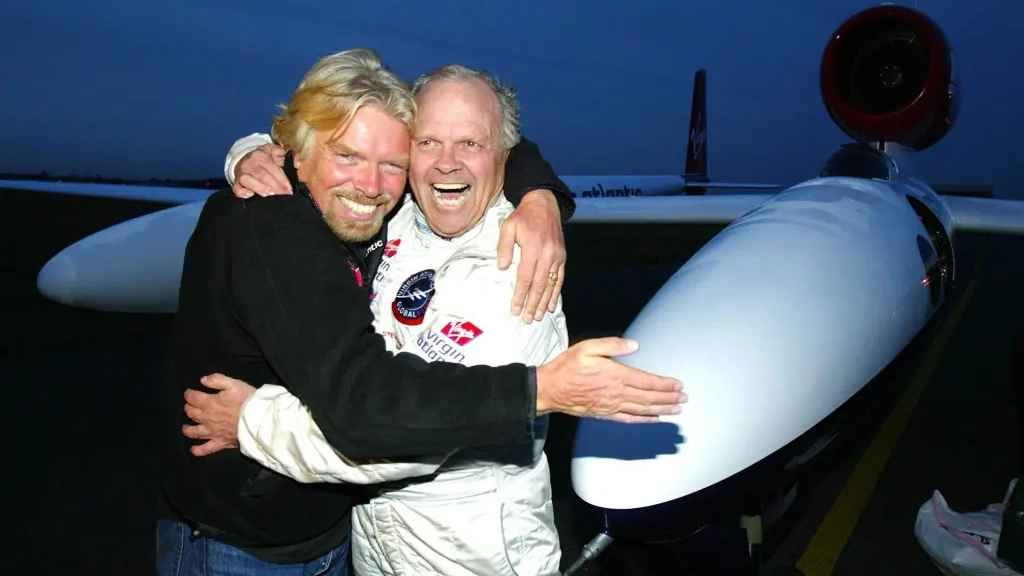
Naturally, he became friends with people like Richard Branson—the guy who founded the Virgin Group—who was also a self-made gazillionaire, and helped fund a lot of Fossett’s endeavors. And of course he made friends with another very wealthy man with a knack for adrenaline: Barron Hilton.
Besides his own personal airstrip to come and go as he pleased and a million-acres of airspace to use as his own personal playground, the Flying M Ranch seemed to have been the place where Steve Fossett would dream up his future accomplishments with Barron Hilton. Or, at least that’s what many autographed photos lining Barron Hilton’s hallways suggested, with one that read,” Barron, the idea started at Flying M.
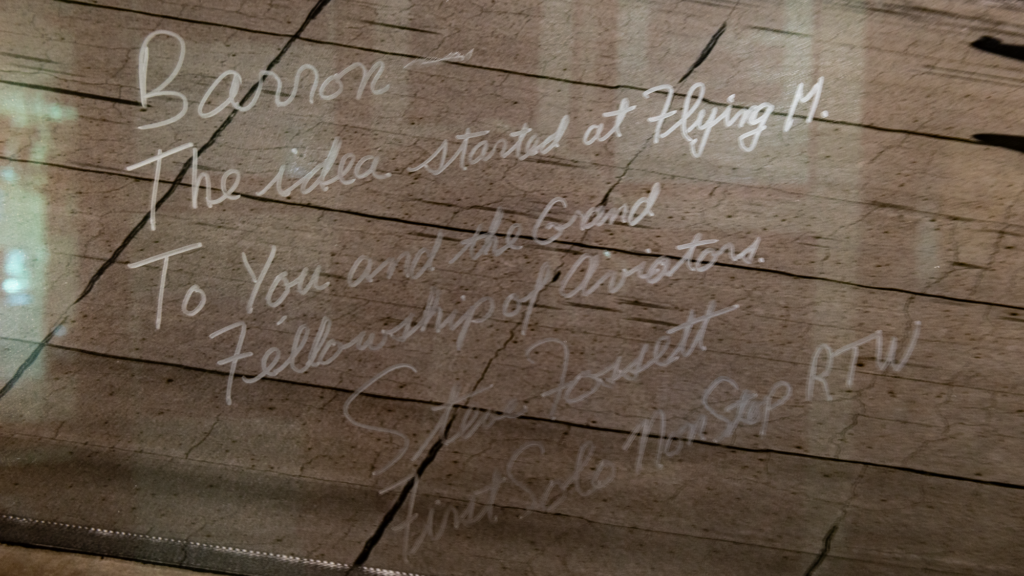
To you, and the Grand Fellowship of Aviators. —Steve Fossett, First Solo Non-Stop Round-the-World.” I can say with certainty I still can’t fully unpack encountering that casually hanging on the wall at the Flying M that afternoon as we quietly waited for the Murphy’s recorded interview in the dining room to wrap up, freeing up park officials to show us the petroglyphs. “THAT Steve Fossett?!”, I asked my husband. Yep, that Steve Fossett.
As they perhaps dreamt up records they would set together, and in that frozen-in-time living room before me, I also like to imagine them thumbing through the Prehistoric Rock Art book I noticed on Barrons bookshelf together. Or, maybe even exploring the Land of a Thousand Tombs with a post-dinner cocktail stroll, as they talked globe-spanning aviation records they would ultimately set.

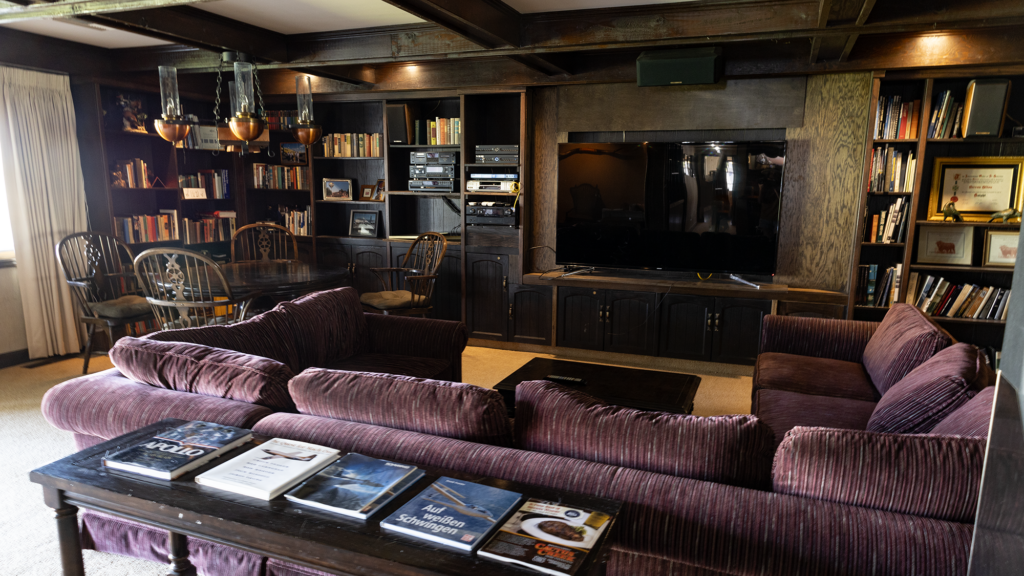
The way I understand it, Fossett was a regular visitor to the Flying M Ranch, which would unfortunately also be the last place he was ever seen alive. On September 3rd, 2007, Fossett departed the Flying M Ranch in a Bellanca Super Decathlon on a self-described “pleasure cruise” and never returned. For an experienced aviator with thousands of flight hours logged and many, many records, it still blows my mind that so many parts of his disappearance were either a rare circumstance or failed altogether, that made recovering his crash impossible until 2008.
For example, Fossett didn’t file a flight plan, but also wasn’t required to do so. His emergency locator transmitter also failed, and despite having all kinds of fancy tech toys like a Brietling watch, he didn’t bring any along of that with him that day which not only made pinpointing his crash site super difficult, but made understanding what caused it a tough solve, too. Fossett had experienced other really wild crashes before, including one where his balloon slammed into the Coral Sea 500 miles east of Australia, so when he didn’t return, Barron, and even Fossett’s wife remained optimistic.
The Civil Air Patrol led the investigation, who fascinatingly enough discovered three unsolved crash sites along the way, but still no Fossett. Then Richard Branson got involved with Google, where he funded the review of high res satellite images with Google Software, and even Neil Armstrong and Terry Delore (a super decorated glider pilot) helped with the search, too. Still no crash site.
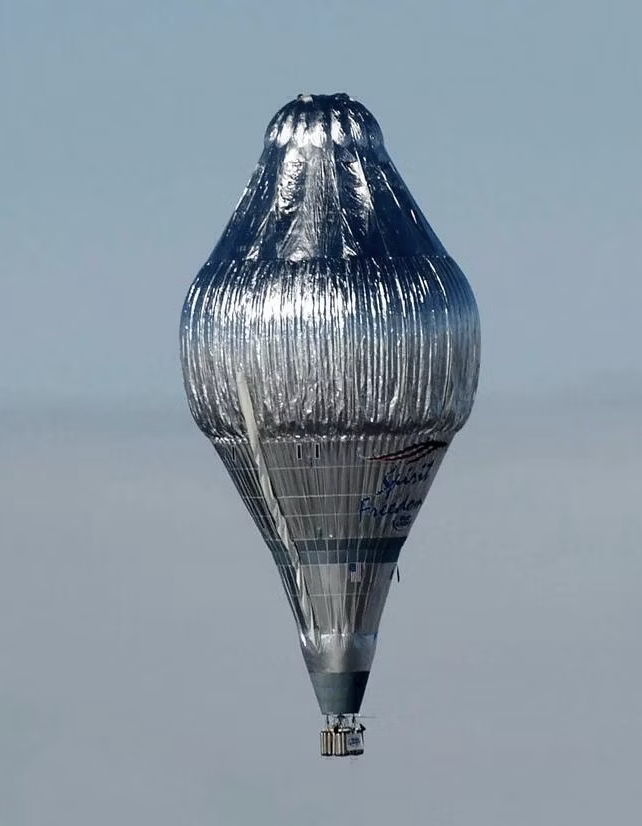
As such an accomplished pilot, you can imagine his disappearance spiraled out of control just about as fast as the Hill of a Thousand Tombs. This was a guy used to piloting gliders, or planes without engines, and even with complete engine failure, he would’ve had the skill to guide his plane safely to the ground. Then rumors began swirling that he could’ve even faked his own death, especially with an uncharacteristically speedy declaration that he was in fact dead by expert survivalists—which happened on September 12th, only nine days after his departure from the Flying M—and without any actual proof of a crash site.
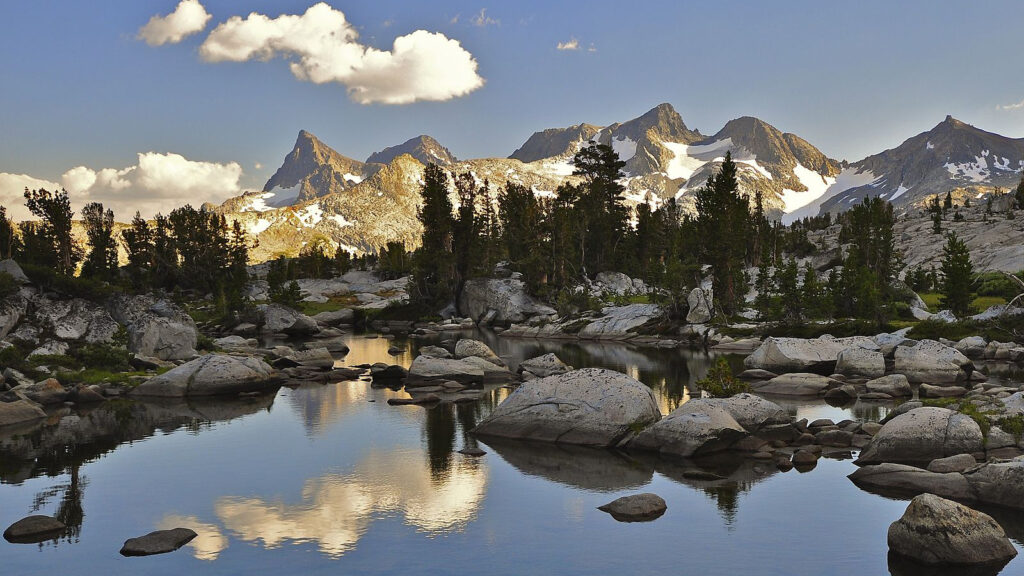
They believed his “pleasure flight” departed from the Flying M, and then went over Lucky Boy Pass and Walker Lake, down to Bodie Ghost Town, and eventually to Yosemite. The Civil Air Patrol ultimately scrutinized 300k square miles—a swath of land three times the size of Nevada—for about a month before ultimately calling off what was the largest, most complex, and most expensive peacetime search for an individual in United States history.
The following year, Simon Donoat’s Team Adventure Science, which was basically a club of about 30 of Steve Fossett’s “friends and admirers” conducted a foot search along the Nevada/California border with no luck. But then in September 2008, an Ansel Adams Wilderness hiker discovered a couple crumpled up ID cards near Mt. Ritter: one FAA-issued card, a Soaring Society of America membership, and about a thousand bucks in cash. It was Fossett’s. This discovery of course re-initiated search teams, who would uncover wreckage 750 yards from where Fossett’s ID cards had been found, confirmed by the tail number on his plane, and even a few human bones that were later proved to be his.
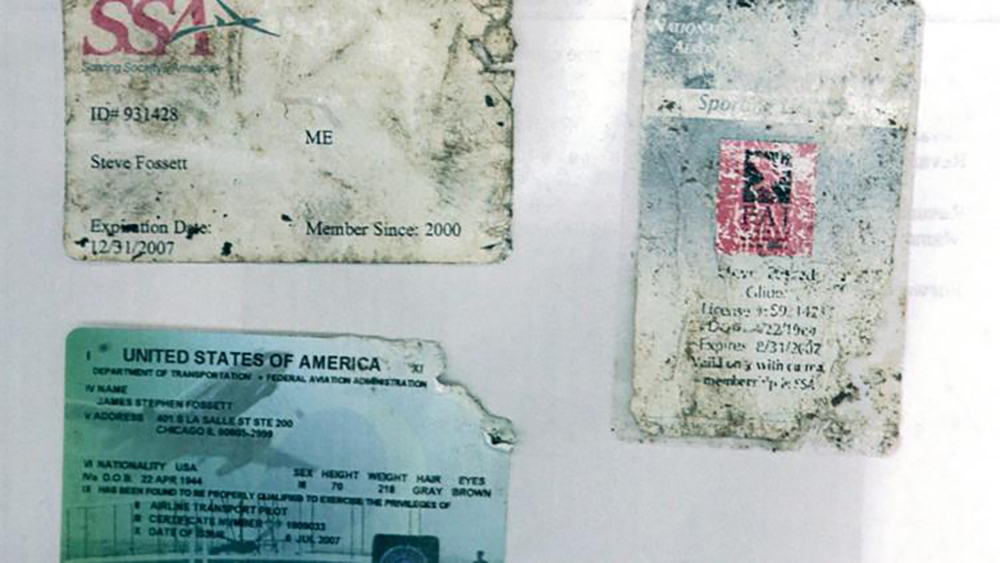
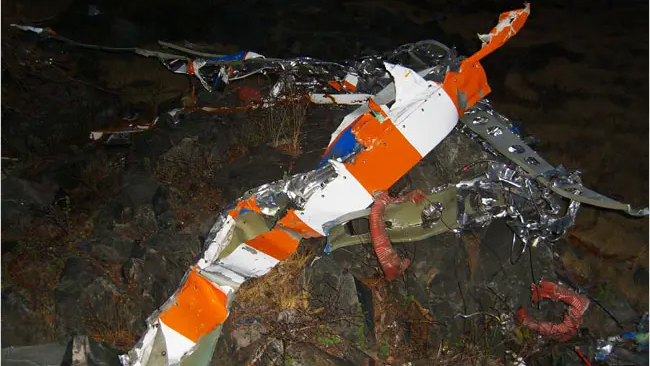
But how could a pilot with Fossett’s accolades simply crash into the mountains? From mysterious theories ranging from high altitude-loss of controls, to a possible heart attack, to a time and space warp Bermuda Triangle effect, experts ultimately blamed the crash on wind, determining Fossett’s plane slammed straight into the eastern Sierra Nevada mountains and disintegrated on impact.
Finding “A Place of Magic”
My first glimpse of the Flying M Ranch was back in 2017, shortly after Brian Sandoval and other Nevada state officials had worked to transition the property from Barron Hilton’s private estate over to Nevada State Parks. That day, a park ranger escorted me through freshly designated Walker River State Recreation Area’s newly acquired properties, some of which had already transitioned over to the state, including that storied stretch of prime fishing at The Elbow Unit of the east Walker River, and the historic Nine Mile Ranch.
As we drove by the Flying M Ranch the ranger pointed it out to me, mentioning that it would someday become Nevada State Parks’ as soon as Hilton passed away. Barron was there inside that day, and as we passed by his airstrip and a pretty ordinary looking ranch-style home at a lush spot on the east Walker River, I didn’t think too much about it, or stop to add up the Rhode Island-sized acreage he would leave in the public’s hands two years later in 2019 when he would ultimately die at the age of 91. I also had absolutely no idea the mystery this exact place fosters, and that it would bring me back just a few years into the future, this time on my own terms.

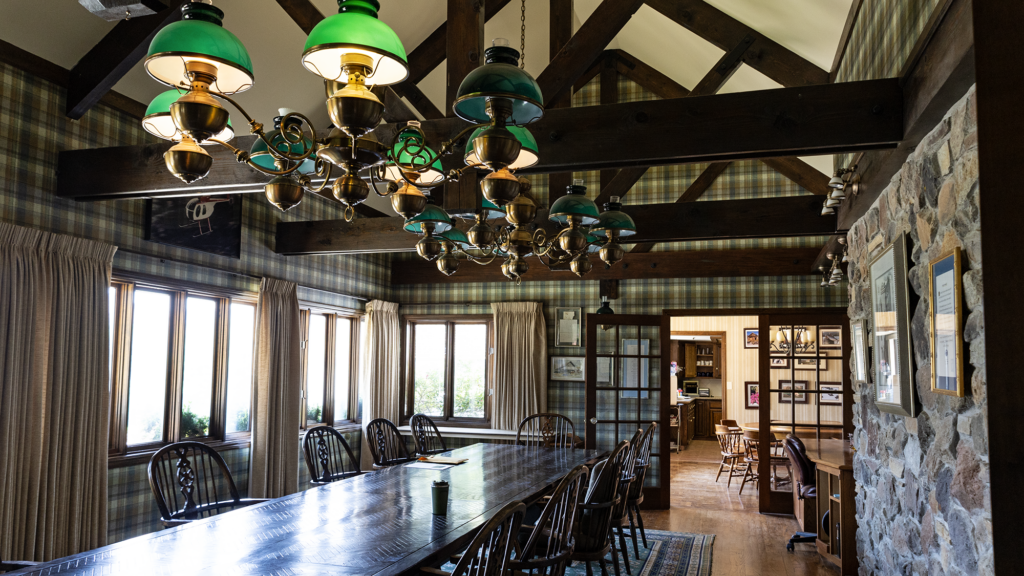
American actor Cliff Robertson was friends with Barron Hilton, and would frequently visit the Flying M. He penned a poem about being here that still hangs in the Flying M’s dining room, called “A Place of Magic.” One time I read something along the lines of, for something to be a magical moment it has to be spontaneous. It just happens. I think most of these instances happen for me in that exact way, where I’ll be out at a Nevada hot spring at sunset, and the only other car in 100 miles will pop over the horizon, kicking up alkali dust that creates a golden hour haze that sure feels an awful lot like magic. Or we’ll be on an ass kicker of a hike where I definitely want to quit and suddenly a kestrel lands on a tree right in front of us that sure seems too powerful to be coincidence.
Last summer I spent a lot of time researching a big project by reading many books about Nevada, including one called Believing in Place by Richard V. Francaviglia. It’s all about Spiritual Geography of the Great Basin, or where faith and landscape meet in Nevada, and that somewhere at a magic interchange you can’t plan for, they can even conspire together to resurrect old myths, like the Land of a Thousand Tombs, and create new ones, like the Flying M Ranch. I know that’s definitely the case with what happened for us, where we went looking for one thing and stayed for another.
I know I’m on a personal quest for as many of these intersections of Nevada history I can find—where an impossible amount of events somehow conspire together in one place to create a collective storyline that’s truly remarkable, or at least one that certainly can’t exist anyplace else, not to mention more than one conspiracy. The real magic in all of it is, at least to me, think of how many more places just like this are unquestionably out there in Nevada’s Sagebrush Ocean, waiting for someone to pull over the truck and notice.
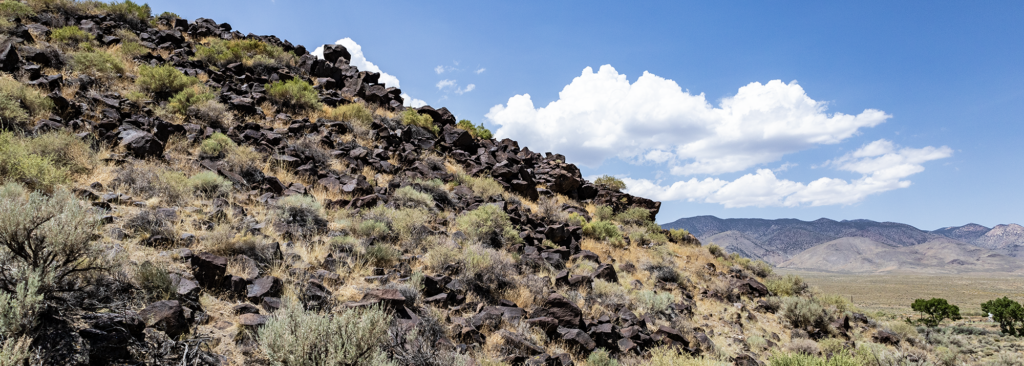
Sources
- “Barron Hilton: The Flying Innkeeper”, Airport Journals, July 2003, http://airportjournals.com/barron-hilton-the-flying-innkeeper/
- “Barron Hilton Cup”, Wikipedia, August 2022, https://en.wikipedia.org/wiki/Barron_Hilton_Cup
- “Crash that killed Steve Fossett blamed on winds”, SF Gate, July 2009, https://www.sfgate.com/bayarea/article/cash-that-killed-steve-fossett-blamed-on-winds-3225821.php
- “Flying M Ranch”, Wikipedia, March 2022, https://en.wikipedia.org/wiki/Flying-M_Ranch
- Francaviglia, Richard. 2003. Believing in Place: A Spiritual Geography of the Great Basin. Reno, NV. University of Nevada Press.
- “Nevada Has Been Home to Many Strange Hoaxes—Part 1”, Backyard Travels in Nevada & Beyond, February 2010, https://backyardtraveler.blogspot.com/2010/02/nevada-has-been-home-to-many-strange.html
- Nevada Organic Phosphate, 2024, https://www.nevadaphosphate.com/
- Moreno, Richard. 2010. Mysteries and Legends: True Stories of the Unsolved and Unexplained. Guilford, CT. Morris Book Publishing
- “Remains Are Found at Site of Fossett Plane Crash”, New York Times, October 2008, https://www.nytimes.com/2008/10/03/us/03fossett.html
- “Remembering Steve Fossett’s 2002 Solo Round-the-World Balloon Flight”, Mental Floss, July 2017, https://www.mentalfloss.com/article/502451/remembering-steve-fossetts-2002-solo-round-world-balloon-flight
- “Richard Branson”, Wikipedia, July 2024, https://en.wikipedia.org/wiki/Richard_Branson
- “Steve Fossett”, Wikipedia, August 2024, https://en.wikipedia.org/wiki/Steve_Fossett










